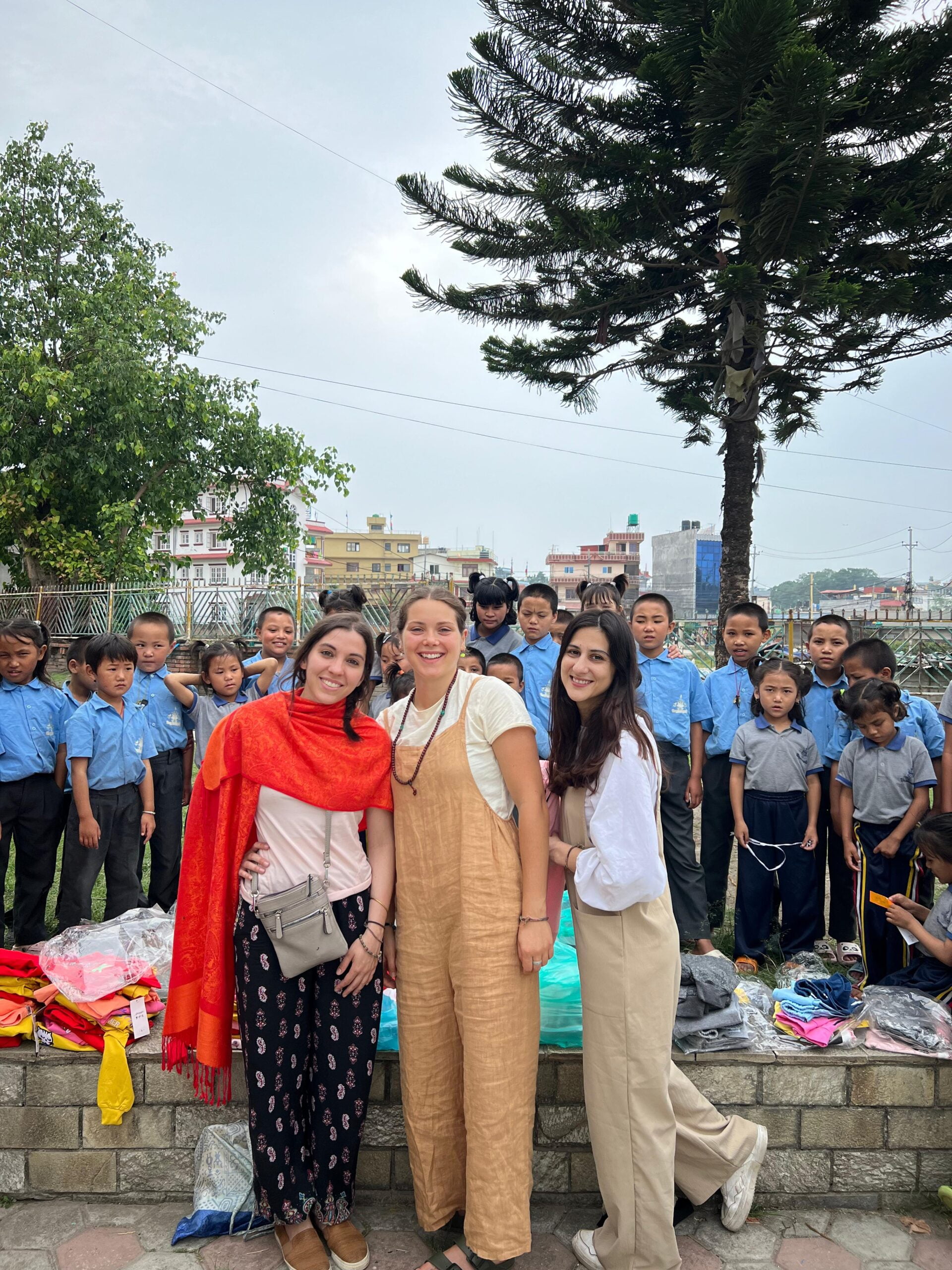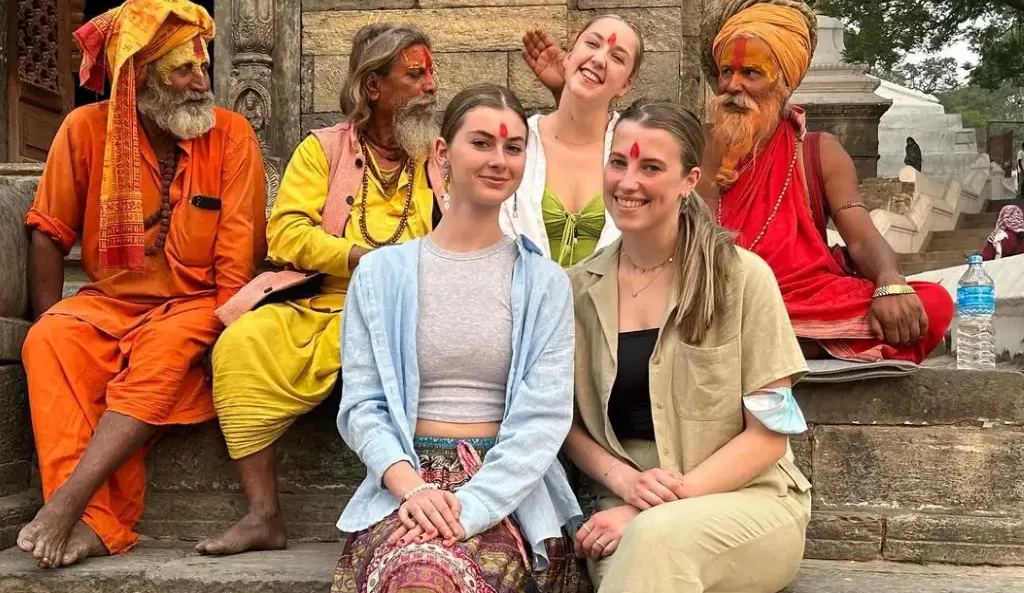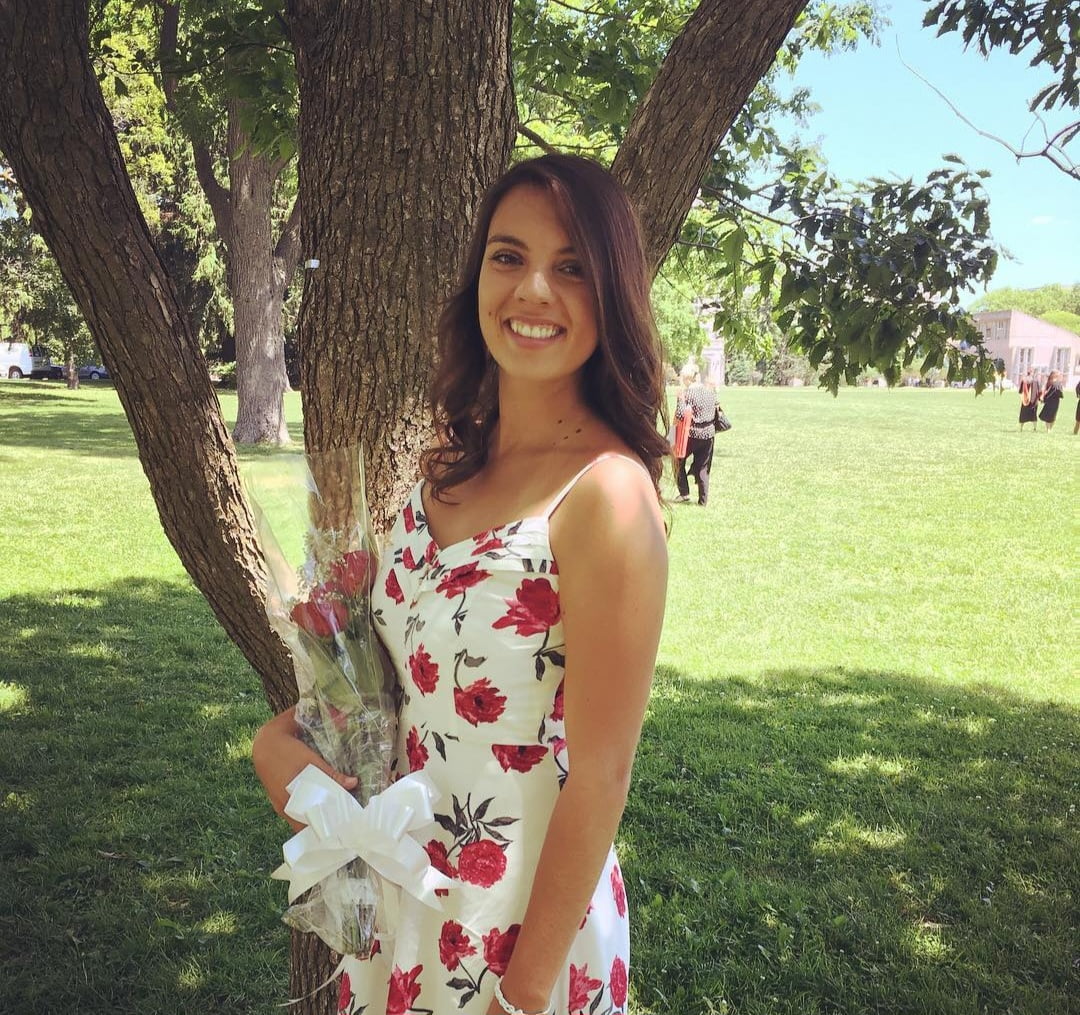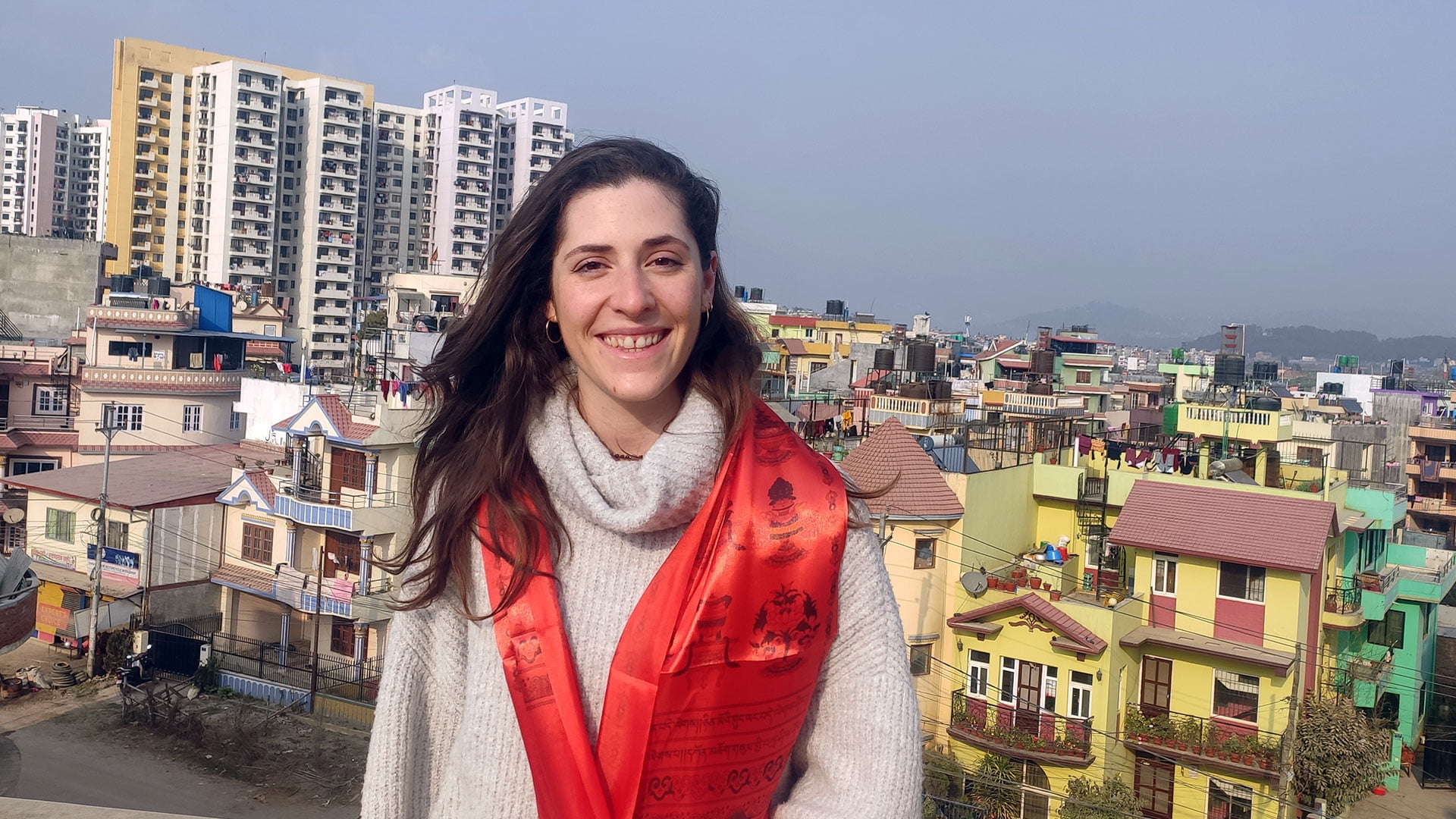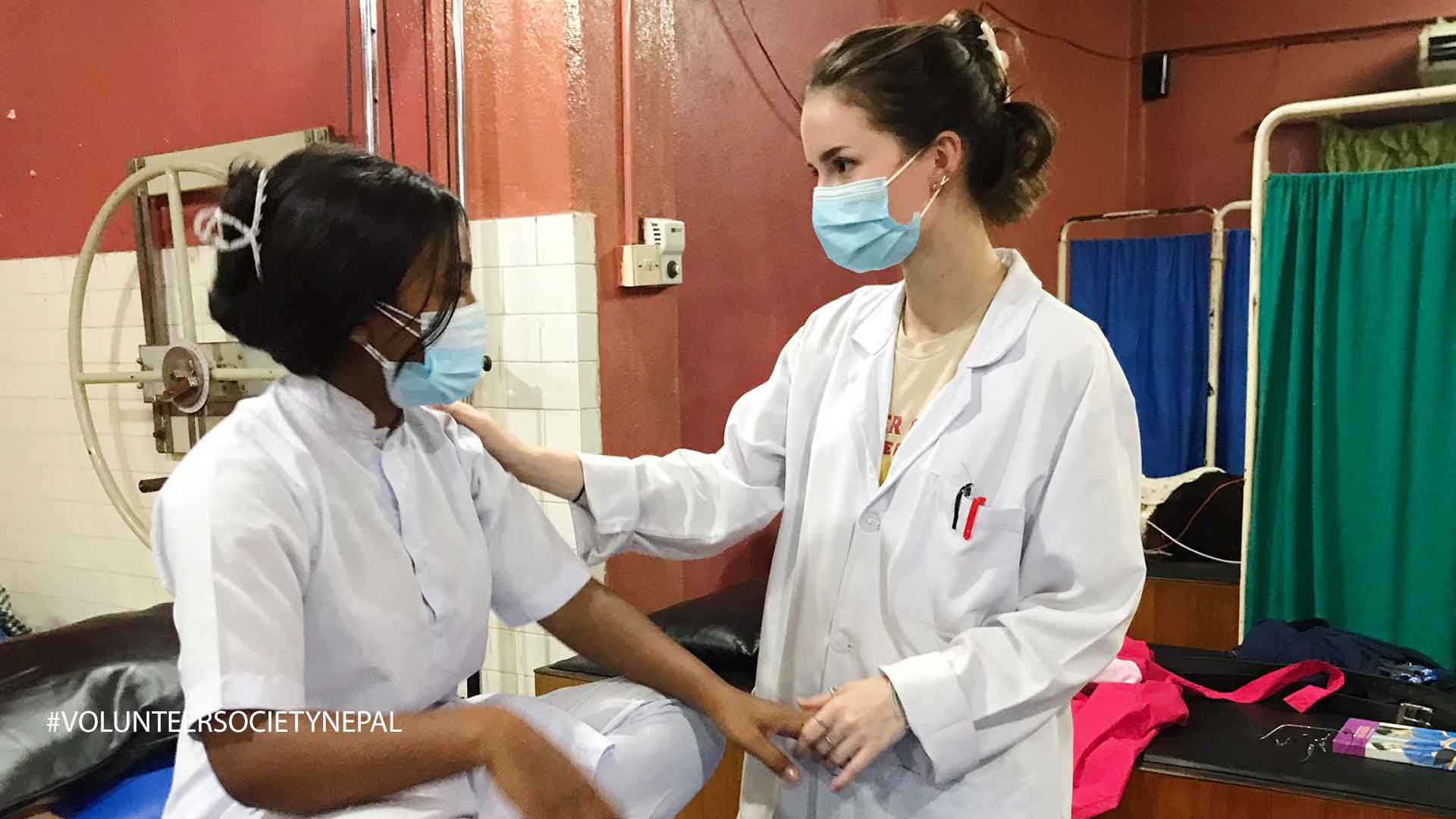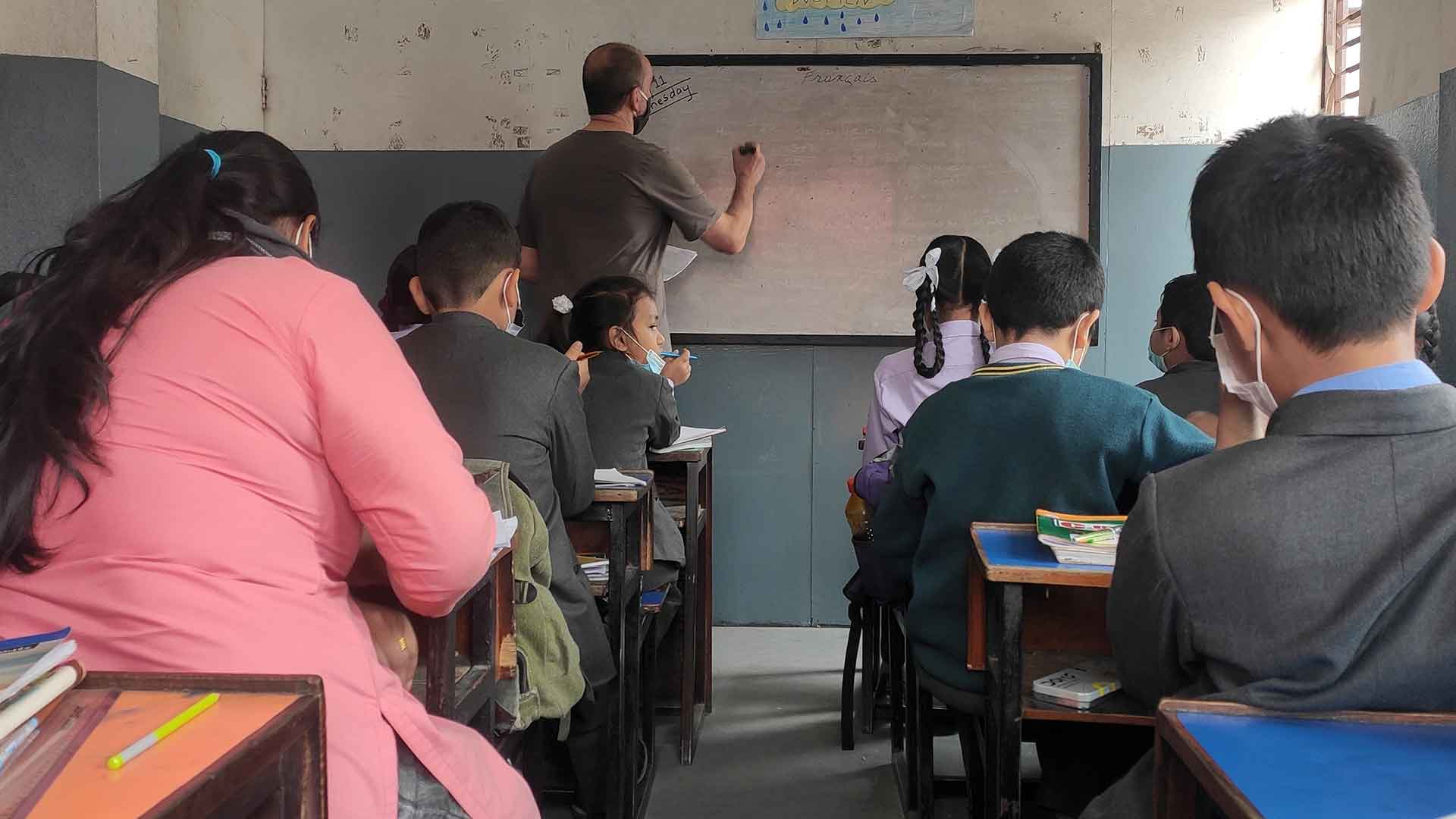I was warmly welcomed by my host family in Kathmandu on May 14, 2022 and stayed with my host family until May 18, 2022. I came to a new culture and learned a lot about Nepalese culture. For 2 days I got lessons in the Nepalese language. On the Buddhist holiday of Veshak on May 16, 2022, I visited Buddhist sites and monasteries in Kathmandu such as Swayambhunath Stupa, Boudhanath Stupa and the Buddhist monastery in Sharminub with a member of the volunteer organization. On May 18th, 2022, I was taken by the volunteer organization with a driver to the monastery in Kathmandu. Some little monks immediately came up to us and greeted us. After I included my room in the monastery, we went to the manager’s office to do some paperwork. On May 19, 2022, I started teaching at 8 a.m. Every day I gave lessons between 2 – 3 hours. The monks looked at me curiously and openly. I taught English and math. The students in my class were between the ages of 8 and 14. The level of the students varied accordingly. One challenge was to respond to the monks individually because of their age and to remain patient. Some were able to answer the questions quickly, some less quickly, and others needed assistance. The monks were willing to learn. Every day I tried to make the lessons as exciting as possible and to prepare them so that all the monks had fun participating in the lessons. Over time, I was able to carry all the monks along and convey a different sense of learning, so that learning and knowledge were fun for them. The joy of the monks confirmed to me that learning is fun for them. They could quickly memorize terms on the board and repeat them after wiping them away. They got to know the connections between different terms and were able to assign terms. Reading English texts or sentences aloud in front of the class became more and more fun for the monks over time, although they didn’t dare at first. Later, they came forward proud and confident and delighted in reading an English text or sentence aloud in front of the class. Many monks learned English terms (nurse, vaccination, dog, motorcycle, a cook, a teacher, bread, bus driver, doctor, football, table, pen etc…) that I had written on small pieces of paper without playing the words or represent so that the other monks or children were allowed to guess which terms are here. I was able to observe how the monks’ creativity was awakened and the monks learned new vocabulary in this playful and artistic way and they were able to remember and save the vocabulary better because they had to act out the terms. In this way, monks were able to present concepts in a playful and artistic way, which helped them to break through the boundaries of thinking and to develop something of their own. I initially helped some monks to represent a concept, but after a while, the monks became more and more confident and creative in representing the concepts themselves. This type of learning was very exciting for the children, challenging and at the same time playfully simple because they didn’t have to exert themselves to learn something. Many math exercises and math games allowed children to solve math problems faster.
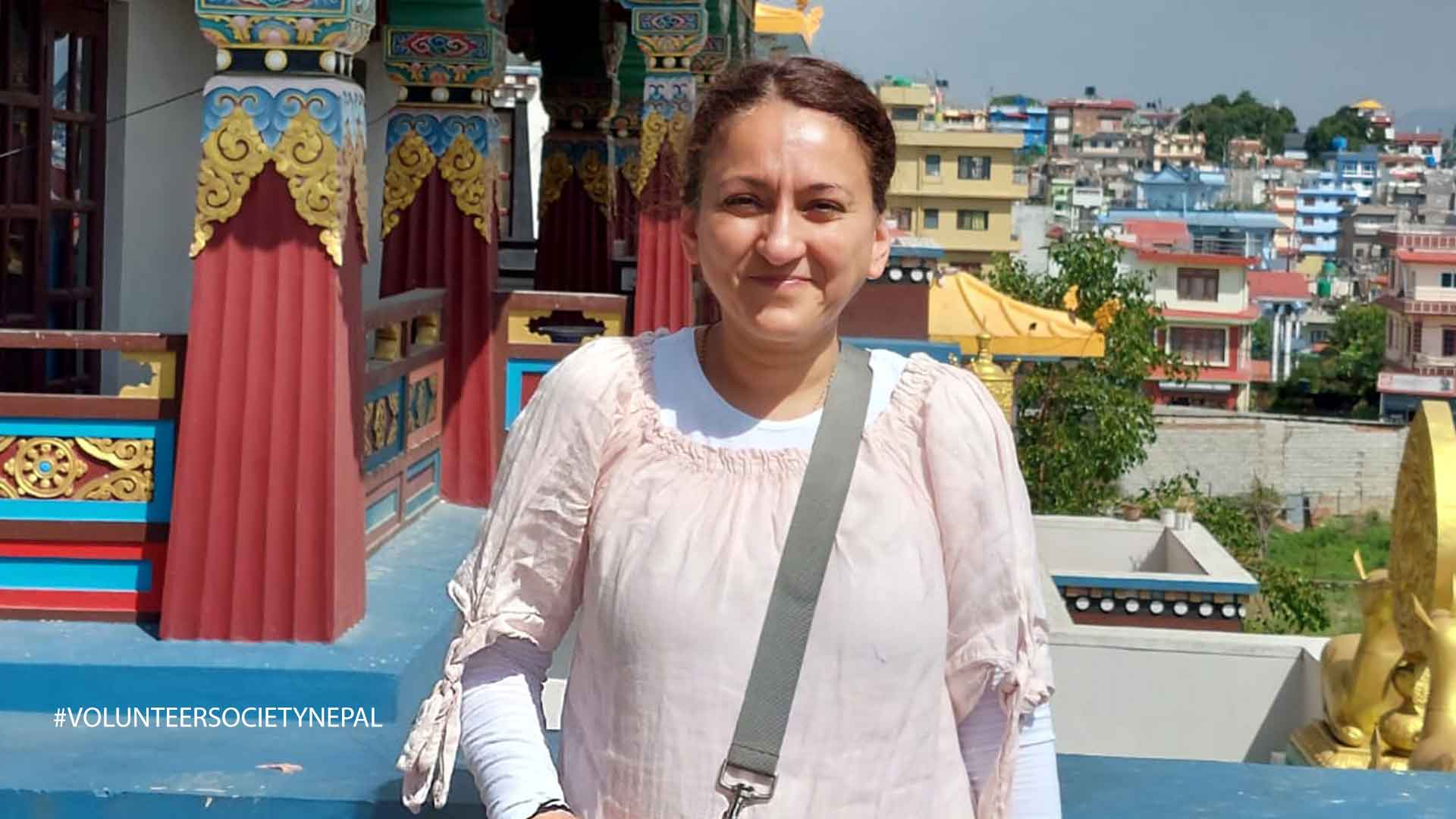
Özlem Gözen
Germany
